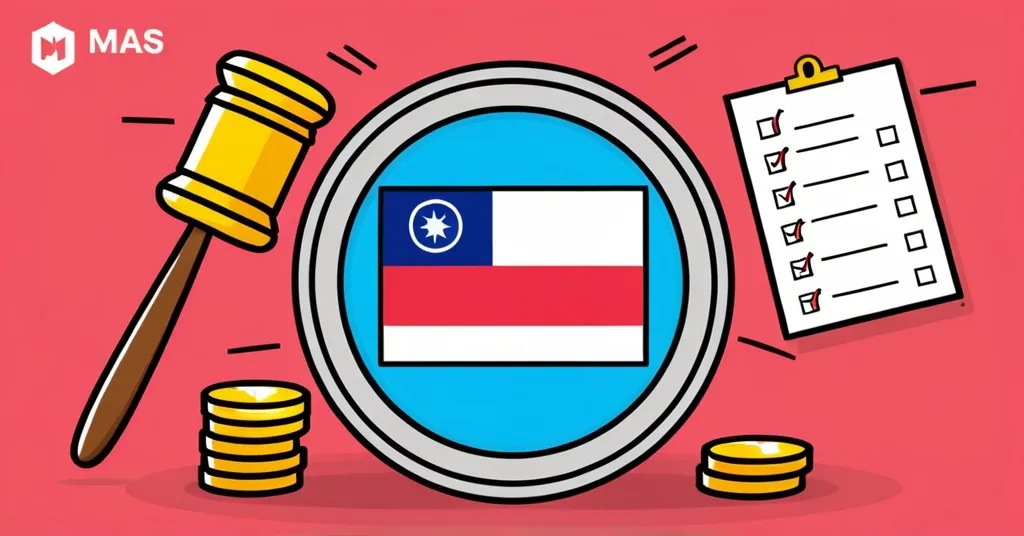Singapore’s Central Bank Embraces Stablecoins, Eyes Tight Regulation

Singapore’s Central Bank Sees Bright Future for Stablecoins as Payment Instruments
The Monetary Authority of Singapore (MAS) is cautiously optimistic about the potential of stablecoins to become a mainstream payment method, provided they are tightly regulated. MAS’s managing director, Chia Der Jiun, emphasized the critical role of regulation in maintaining value stability, setting the stage for a new era in digital finance in Singapore.
- Stablecoins eyed as future payment method
- Regulation key to ensuring value stability
- No current need for Singapore dollar CBDC
Why Stablecoins? The MAS Vision
MAS sees stablecoins as a bridge between traditional finance and the burgeoning digital asset ecosystem. Stablecoins are digital currencies designed to maintain a constant value, typically pegged to a fiat currency like the Singapore Dollar or a major G10 currency. This stability makes them attractive as a payment instrument, potentially simplifying transactions and reducing volatility risks associated with other cryptocurrencies.
Chia Der Jiun stated,
“Stablecoins have features that provide more value stability, with the potential to become a widely used payment instrument. MAS sees good potential in stablecoins provided they are well-regulated to have a high degree of value stability.”
Tightening the Reins: MAS’s Regulatory Approach
To ensure this potential is realized safely, MAS is developing a regulatory framework that involves amending the Payment Services Act (PSA). This framework will set stringent criteria for stablecoin issuers, focusing on reserve assets, capital requirements, redemption at par, and disclosure. Only those meeting these standards can apply for their stablecoins to be recognized as ‘MAS-regulated stablecoins,’ which aims to differentiate them from unregulated stablecoins and boost consumer trust.
Chia Der Jiun elaborated,
“We are working on the necessary legislative amendments to the PS (Payment Services) Act to implement the stablecoins framework. Only stablecoin issuers that fulfill all requirements under the framework can apply for their stablecoins to be regulated by MAS as ‘MAS-regulated stablecoins.’ This will allow the market to differentiate these stablecoins from other types that are not regulated for their value stability.”
By establishing clear guidelines, MAS aims to prevent the pitfalls of unregulated digital assets, such as volatility and fraud. The ‘MAS-regulated’ badge will serve as a seal of trust, signaling to consumers that these stablecoins meet Singapore’s strict regulatory standards.
CBDC: Not on Singapore’s Agenda Yet
While embracing stablecoins, MAS has taken a different stance on Central Bank Digital Currencies (CBDCs). A CBDC is a digital form of a country’s fiat currency issued by its central bank. Chia Der Jiun noted that issuing a retail Singapore dollar CBDC isn’t compelling at the moment due to the efficiency of existing electronic payment systems in Singapore.
He explained,
“MAS has assessed that the case for issuing a retail Singapore dollar CBDC in Singapore is not compelling at this juncture, as electronic payments in Singapore are quite pervasive, seamless and efficient.”
This decision reflects Singapore’s confidence in its cashless payment infrastructure, which is already robust and widely adopted. Instead of pursuing a CBDC, MAS is focusing on leveraging stablecoins to enhance digital finance without disrupting the well-functioning systems in place. The impact of Singapore’s decision against a retail CBDC on electronic payment systems is a topic of ongoing discussion.
Market Impact and Future Prospects
The introduction of the stablecoin regulatory framework could attract more issuers to seek MAS-regulated status, potentially boosting market trust and adoption. This framework aims to create a clear distinction between regulated and unregulated stablecoins, providing consumers with greater clarity and confidence in using digital assets for everyday transactions.
Looking ahead, Singapore’s approach to stablecoins may set a precedent for other countries grappling with how to integrate and regulate these digital currencies. The upcoming Singapore FinTech Festival 2024, focusing on AI, quantum technology, and digital assets, underscores Singapore’s commitment to fintech innovation and could further cement its position as a leader in the digital finance space. The future of stablecoins in digital finance looks promising.
The crypto world is no stranger to wild swings, but Singapore’s cautious optimism about stablecoins offers a refreshing perspective. It’s a reminder that while the potential for digital financial revolution is immense, the key to realizing it lies in balancing innovation with responsible regulation. The potential for stablecoins as payment instruments is a topic that continues to garner attention.
Key Questions and Takeaways
- What potential do stablecoins have according to the Monetary Authority of Singapore?
Stablecoins have the potential to become a widely used payment instrument, especially if they are well-regulated for value stability.
- What steps is MAS taking to regulate stablecoins?
MAS is working on legislative amendments to the Payment Services Act to establish a regulatory framework for stablecoins. This framework will allow stablecoin issuers to apply for their products to be regulated as ‘MAS-regulated stablecoins,’ distinguishing them from non-regulated stablecoins.
- Why has MAS decided against issuing a retail Singapore dollar CBDC at this time?
MAS believes that issuing a CBDC is unnecessary because electronic payment systems in Singapore are already pervasive, seamless, and efficient.
- How will the new regulatory framework affect the stablecoin market in Singapore?
The framework will create a distinction between MAS-regulated stablecoins and other types, potentially increasing consumer trust and market clarity for regulated stablecoins.



